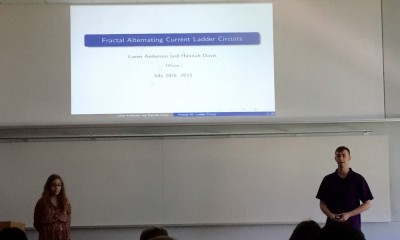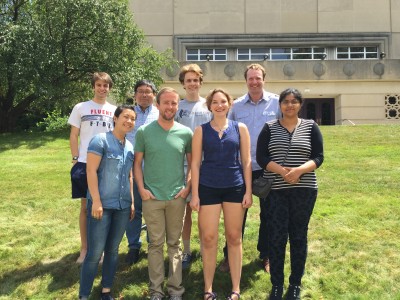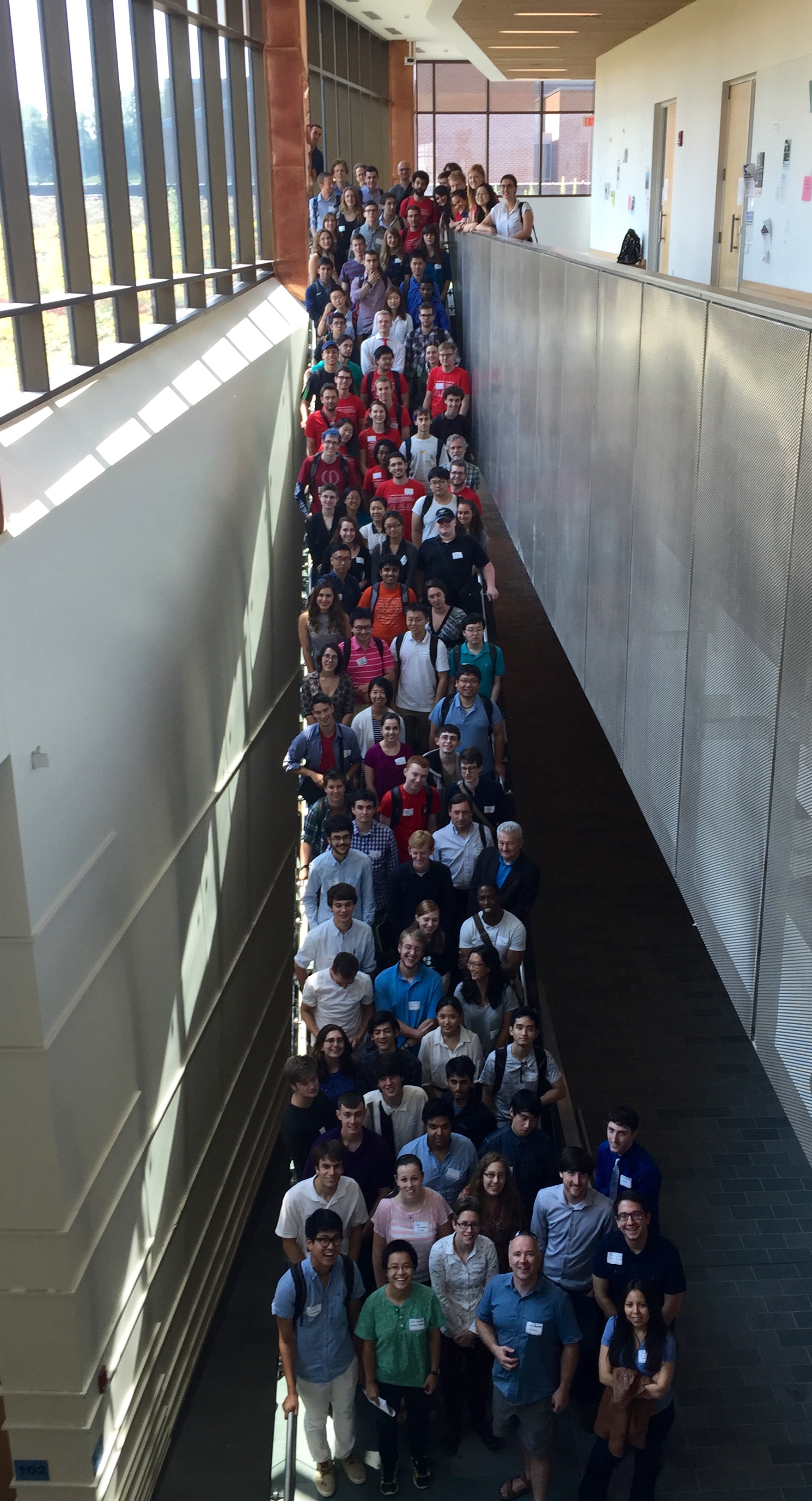Event
AMS Sectional Meeting @ Stony Brook
Loren Anderson, Aubrey Coffey, Hannah Davis, Lee Fisher, Madeline Hansalik, Stephen Loew
Alexander Teplyaev, Luke Rogers, Antoni Brzoska, Ulysses Andrews
In this project, Feynman’s analysis of an infinite ladder circuit is extended to fractal circuits, in particular, a Sierpinski Ladder circuit and two variants of a Hanoi circuit. These circuits are constructed by taking the limit of graph approximations with inductors and capacitors placed along edges in a well-defined manner. Inductors, capacitors and resistors all contribute to the impedance within a circuit; but whereas a resistor imparts a real impedance, inductors and capacitors impart a purely imaginary impedance.
For each circuit, the following was accomplished. First, the net impedance between certain boundary points of the circuit was computed. Second, the filter conditions for each circuit were found. A circuit becomes a filter when the net impedance between boundary vertices has a positive real part! Third, it was proved that these impedances can be obtained by placing a small positive resistance epsilon on each edge of the graph approximations, finding the limiting impedance between the boundary vertices, and then taking epsilon to zero. Finally, the construction of harmonic functions on these circuits was outlined.
| Journal reference: | Stochastics and Dynamics, Vol. 17, No. 6 (2017) 1750046 |
| DOI: | 10.1142/S0219493717500460 |
May 29, 2015
Professor Alexander Teplyaev will explain some ideas behind the notion of spectral dimension and how they are related to research being done in our department.
June 5, 2015
Professor Masha Gordina will talk about the fascinating history of the Brownian motion and its applications in the real world.
June 12, 2015
Professor Keith Conrad will talk about continued fractions, how to compute them, some of their properties, and how to answer seemingly unanswerable questions like this: if an unknown fraction is roughly 2.32558, what is it? (The answer is not 232558/100000.)
June 19, 2015
Following Dr. Gordina’s talk developing Brownian motion, Thomas Laetsch will take us on a short drunkard’s walk through several theories stemming from or related to Brownian motion. R(E)U ready?
June 26, 2015
Joe Chen will summarize the main ideas behind electrical networks and describe two unexpected applications to probability.
| Journal reference: | Stochastics and Dynamics, Vol. 17, No. 6 (2017) 1750046 |
| DOI: | 10.1142/S0219493717500460 |
Lance Ford, Derek Kielty, Rajeshwari Majumdar, Heather McCain, Dylan O’Connell
We investigated systems of complex-valued ordinary differential equations (ODEs) that blows up in finite time, which we refer to as explosive systems. The goal is to understand for what initial conditions does the system explode and will the addition of noise stabilize it; that is, if we were to perturb the system with an additive Brownian motion, will the system of stochastic differential equation (SDE) still be explosive? In fact, we were able to prove a toy model of the stochastic Burgers’ equation to be ergodic; that is, the SDE is nonexplosive and it has a unique limiting distribution.
Alexander Teplyaev, Luke Rogers, Ulysses Andrews
We consider the wave equation on the unit interval with fractal measure, and use two numerical models to study wave speed and propagation distance. The first approach uses a Fourier series of eigenfunctions of the fractal Laplacian, while the second uses a Markov chain to model the transmission and reflection of classical waves on an approximation of the fractal. These models have complementary advantages and limitations, and we conjecture that they approximate the same fractal wave.

(photo courtesy Megan Brunner)
Mini-Symposium poster